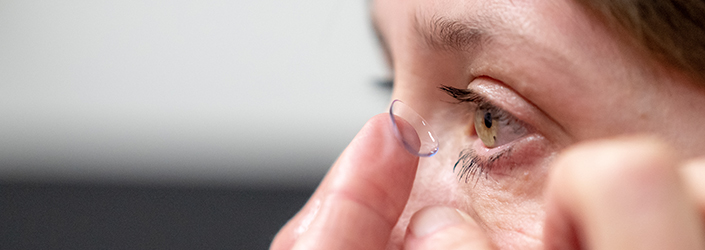Types of Contact Lenses
Contacts are made from many kinds of plastic. The two most common types of contact lenses are hard and soft.
Hard contact lenses
The most common type of hard contact lens is a rigid gas-permeable (RGP) lens. These lenses are usually made from plastic combined with other materials. They hold their shape firmly, yet they let oxygen flow through the lens to your eye.
RGP lenses are especially helpful for people with astigmatism and a condition called keratoconus. This is because they provide sharper vision than soft lenses when the cornea is unevenly curved. People who have allergies or tend to get protein deposits on their contacts may also prefer RGP lenses.
Soft contact lenses
Most people choose to wear soft contact lenses. This is because they tend to be more comfortable and there are many options. Here are some types of soft lenses.
Daily wear contacts. You wear these when you are awake and remove them when you go to sleep. Many are disposable, meaning that you wear a new pair of contacts each day. Or you might choose contacts that last longer and only need to be replaced once a week, every two weeks or every month. Some ophthalmologists recommend disposable daily wear contacts if you use them just once in a while.

Extended wear contacts. You can wear these while you sleep, but they need to be removed for cleaning at least once a week. Fewer eye doctors recommend these contacts because they increase the chance of getting a serious eye infection.
Toric contacts. These can correct vision for people with astigmatism, though not as well as hard contact lenses. Toric lenses can be for daily or extended wear. But they often cost more than other types of soft contact lenses.
Colored (tinted) contacts. Vision-correcting contact lenses can be tinted to change the color of your eye. You can get them as daily wear, extended wear, and toric lenses.
Decorative (cosmetic) contacts. These lenses change the look of your eye but do not correct vision. They include colored contacts and lenses that can make your eyes look like vampires, animals or other characters. Also, they are used to hide certain eye problems either present from birth or caused by injuries. Even though they do not correct vision, you need a prescription for decorativecontacts. To avoid getting dangerous eye infections, these lenses must be treated like prescription contacts. This means cleaning them regularly and thoroughly as directed.

